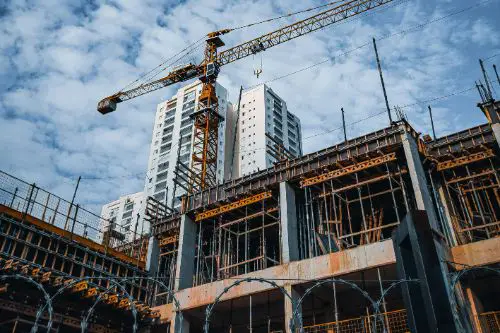1. Home Sales on the Rise

After a period of sluggish activity, California’s housing market is expected to rebound. The California Association of Realtors (C.A.R.) forecasts a 10.5% increase in existing single-family home sales, reaching approximately 304,400 units in 2025, up from 275,400 in 2024. This is a promising sign for buyers, sellers, and investors who have been waiting for the market to stabilize after recent volatility. The projected growth stems from improving economic conditions and a slightly lower mortgage rate environment, which are making it easier for transactions to proceed.
This anticipated uptick suggests that both buyers and sellers are gaining confidence, likely influenced by factors like a gradual improvement in wages and employment rates. For prospective buyers, this means more listings to choose from, while sellers might benefit from renewed competition and higher offers. Whether you’re entering the market for the first time or looking to make a strategic move, this forecast indicates a lively and dynamic housing landscape in California.
2. Median Home Prices Climbing

Homeowners might find this encouraging: California’s median home price is projected to rise by 4.6%, reaching $909,400 in 2025, following a 6.8% increase to $869,500 in 2024, per C.A.R. Despite headwinds from affordability concerns, the steady climb in prices reflects the state’s ongoing demand for housing, coupled with limited inventory in many regions. In some urban centers like San Francisco and Los Angeles, prices may rise even more, as these cities remain hubs for tech and creative industries.
For buyers, this means staying ahead of the curve by locking in purchases sooner rather than later to avoid higher costs. Sellers, on the other hand, might use this opportunity to maximize their return on investment. The forecast also highlights the importance of government and private-sector initiatives to address housing shortages, as prices like these are out of reach for many first-time buyers without support.
3. Rental Prices Expected to Remain High

In 2025, rental prices in California are expected to stay elevated, especially in metropolitan areas like Los Angeles, San Francisco, and San Diego, USC Lusk Center for Real Estate reports. Rent growth might slow slightly compared to previous years, but the overall demand for rental housing continues to outpace supply. Factors such as limited new rental construction, high home purchase prices, and a growing population of renters are contributing to this trend. Experts predict that renters should expect increases of around 3-5% in many cities.
For renters, this means budgeting wisely and exploring options like co-living or moving to less expensive suburbs. Landlords, meanwhile, can benefit from a competitive market with high occupancy rates but may need to balance profitability with the reality of tenant affordability. The ongoing rental squeeze also highlights the importance of policies like rent control and efforts to expand affordable housing stock to provide relief for California’s growing renter population.
4. Suburban Housing Demand Continues to Surge

The pandemic era sparked a wave of migration to California’s suburbs, and that trend isn’t slowing down in 2025, according to a CoStar report. Areas like Riverside, Sacramento, and Fresno are seeing increased demand as buyers search for more affordable homes and larger spaces. Suburban homes often offer more square footage and proximity to nature, which are becoming key priorities for families and remote workers alike.
For prospective buyers, these suburban areas may offer the best chance at finding affordable properties without sacrificing quality of life. Sellers in these regions should prepare for heightened interest and possibly quicker sales. However, this trend also means that suburban markets are becoming more competitive, and buyers should act decisively when they find the right property. The continued appeal of suburban living is reshaping the housing market dynamics across California.
5. Construction Activity Faces Hurdles

While California needs more housing, construction growth is expected to remain sluggish in 2025. Challenges such as high material costs, labor shortages, and strict zoning laws are hampering developers’ ability to meet demand. Additionally, according to OilPrice.com, the wildfires have made things even more complicated. Although some regions are pushing for regulatory reforms to encourage building, the overall pace of new construction will likely fall short of what’s needed to ease the housing crunch.
For buyers and renters, this means that inventory may remain tight, further fueling competition and price increases. Policymakers and developers alike must continue working on solutions to these barriers, such as streamlining the permitting process and investing in workforce development for the construction industry. The state’s ongoing housing shortfall underscores the importance of innovative approaches to building, such as modular construction and adaptive reuse of commercial properties.
6. Affordable Housing Remains a Critical Issue

Despite efforts at the state and local levels, affordable housing continues to be one of California’s most pressing concerns. With the median home price nearing $1 million and rents skyrocketing, many residents are struggling to keep up. Programs like the California Housing Accelerator aim to fast-track affordable housing projects, but the need still vastly outstrips the supply.
For lower- and middle-income families, the lack of affordable options often forces difficult decisions, such as moving out of state or enduring long commutes. Policymakers and community leaders must continue prioritizing affordable housing initiatives to create sustainable solutions. Innovations like accessory dwelling units (ADUs) and public-private partnerships could play a larger role in addressing this challenge in the coming years.
7. Interest Rates Could Stabilize

Mortgage rates, which have been highly volatile in recent years, are expected to stabilize around 6% in 2025, according to economic forecasts. While this rate is still higher than the ultra-low levels seen in 2020-2021, it’s an improvement over the peak rates of 2023-2024. Stabilizing rates could make home financing more predictable and give buyers the confidence to move forward with purchases.
This could also encourage refinancing activity among current homeowners, particularly those who purchased during higher-rate periods. For buyers, this slight reprieve in borrowing costs might provide the breathing room needed to secure a home in California’s competitive market. It’s a small but meaningful shift that could contribute to a more balanced and accessible housing environment.
8. Tech Industry Drives Regional Growth

California’s tech sector continues to play a significant role in shaping the housing market, particularly in areas like the Bay Area and Silicon Valley. Companies like Google, Apple, and Meta are expanding campuses and bringing in thousands of high-paying jobs, which increases demand for housing in these regions. However, this growth exacerbates affordability challenges for lower-income workers.
For tech employees, these areas remain attractive due to their proximity to work and amenities. For others, the booming tech economy might mean facing increased competition for housing or being priced out entirely. This dynamic highlights the importance of integrating workforce housing and public transit solutions into tech-heavy regions to create a more equitable housing landscape.
9. Climate Change Influencing Housing Choices

California’s susceptibility to wildfires, droughts, and rising sea levels is becoming a significant factor in housing decisions. In 2025, more buyers are expected to prioritize homes in areas less prone to natural disasters, while others will invest in features like fire-resistant materials, energy-efficient designs, and advanced water conservation systems. Insurance costs are also rising in high-risk areas, adding another layer of complexity for homeowners and buyers.
This shift is prompting developers and local governments to rethink building codes and urban planning. For example, some communities are incentivizing construction in low-risk areas or investing in infrastructure to mitigate climate impacts. Whether you’re a buyer considering long-term safety or a seller in a risk-prone region, understanding how climate resilience affects property values and costs will be crucial in the years ahead.
10. Investors Returning to the Market

After a slowdown in the past couple of years, real estate investors are expected to make a stronger comeback in 2025. Stabilizing interest rates and improving rental yields are making California properties more attractive to institutional and individual investors alike. However, this resurgence could tighten inventory further, especially in popular rental markets like Los Angeles and Orange County.
For prospective homeowners, this means being prepared to compete with cash offers and fast-moving investors. On the flip side, sellers may benefit from heightened demand and the potential for quick, high-value transactions. This dynamic underscores the importance of working with experienced real estate professionals who can help buyers and sellers navigate competitive environments effectively.
11. Urban Revitalization Gains Momentum

As more people return to offices and cultural hubs, urban areas are experiencing a renaissance. Cities like Los Angeles, San Diego, and Oakland are seeing renewed interest in downtown living, driven by improved public transit, new amenities, and revitalization projects. Developers are focusing on mixed-use properties that blend residential, retail, and office spaces, creating vibrant, walkable neighborhoods.
For buyers and renters, urban living offers convenience and proximity to work and entertainment, though prices in revitalized areas are often higher. Sellers in these markets might see increased demand and quicker sales, particularly for properties near transit hubs. This trend is a testament to the enduring appeal of city living, even as suburban areas continue to attract their share of interest.
12. Policy Shifts Could Reshape the Market

In 2025, housing policy changes at the state and local levels could significantly influence the market. Proposals aimed at streamlining housing approvals, expanding rent control, and incentivizing affordable housing development are gaining traction. For example, Senate Bill 9, which allows for more multi-unit developments in single-family zones, is expected to increase housing density in urban and suburban areas.
These changes could provide new opportunities for builders, landlords, and homeowners while also addressing the state’s housing shortage. However, critics argue that some measures might have unintended consequences, such as discouraging investment in certain areas. Staying informed about these policy shifts is essential for anyone involved in California real estate, as they could have far-reaching impacts on everything from zoning to property values.


